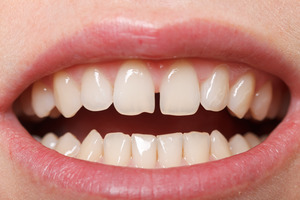Closing the Gap: How to Fix a Diastema

A bright, confident smile can do wonders for your self-esteem and overall appearance. However, for some people, a diastema, which is a gap between teeth, can be a source of self-consciousness and discomfort. If you’re one of those individuals, fret not! In this blog, we’ll explore the various options available to fix a diastema and help you achieve the smile you’ve always desired.
Understanding Diastema
Before delving into the solutions, let’s understand what a diastema is and why it occurs. A diastema is a noticeable gap between two or more teeth, often found between the front teeth. This gap can result from various factors, including genetics, habits like thumb-sucking, or gum disease. Beyond the physical aspect, a diastema can impact your emotional well-being and self-confidence, making it essential to address.
Consultation and Assessment
The first step toward closing the gap in your smile is to consult with a qualified dentist or orthodontist. They will thoroughly assess your oral health and discuss your concerns. During this consultation, various diagnostic tools, such as X-rays, dental impressions, and a comprehensive examination, may be used to determine the best treatment plan for your specific case.
Treatment Options
1. Orthodontic Treatment:
a. Braces: Traditional braces are a tried-and-true method for gradually closing gaps between teeth. They work by applying consistent pressure to move the teeth into the desired position.
b. Invisalign: Clear aligners, like Invisalign, offer a discreet alternative to traditional braces. These removable aligners are especially popular among adults.
2. Cosmetic Dentistry:
a. Dental Bonding: Dental bonding involves using composite resin to fill the gap between teeth, effectively closing it. This procedure is non-invasive and provides instant results.
b. Veneers: Porcelain veneers are ultra-thin shells placed over the front surface of teeth to reshape and close gaps. Veneers provide a durable and long-lasting solution for diastema.
3. Oral Health Considerations:
a. Gum Disease Treatment: If gum disease exacerbates your diastema, addressing the underlying gum issues is crucial. Your dentist will recommend appropriate treatments.
Choosing the Right Option
Deciding on the best treatment option for your diastema should be a collaborative effort between you and your dental professional. Consider factors such as cost, treatment duration, and maintenance requirements, and ensure that the chosen solution aligns with your preferences and lifestyle.
Post-Treatment Care
Once your diastema is closed, maintaining good oral hygiene is essential to ensure lasting results. Your dentist may recommend the use of retainers or follow-up treatments to help maintain your newly aligned teeth. Follow their guidance to enjoy the benefits of your beautiful, gap-free smile for years to come.
About the Author
Dr. Alan R. DeAngelo, a distinguished dentist, earned his BS in biology from Loyola University of Chicago and later received his BSD and DDS degrees from the University of Illinois College of Dentistry. With a passion for perfection, he continually advances his expertise in esthetic dentistry, implant dentistry, and more. Dr. DeAngelo is certified in dental lasers, an Invisalign provider, and uses cutting-edge technology like the iTero Digital Impression system. Beyond dentistry, he’s an active member of his community, an avid aquarist, and a leader in a freshwater conservation organization. Recognized as one of America’s Top Dentists, he’s a trusted authority in the field.
If you have any questions about gapped teeth, he can be reached at his website or by phone at (708) 854-5912.
No Comments
No comments yet.
RSS feed for comments on this post.
Sorry, the comment form is closed at this time.
